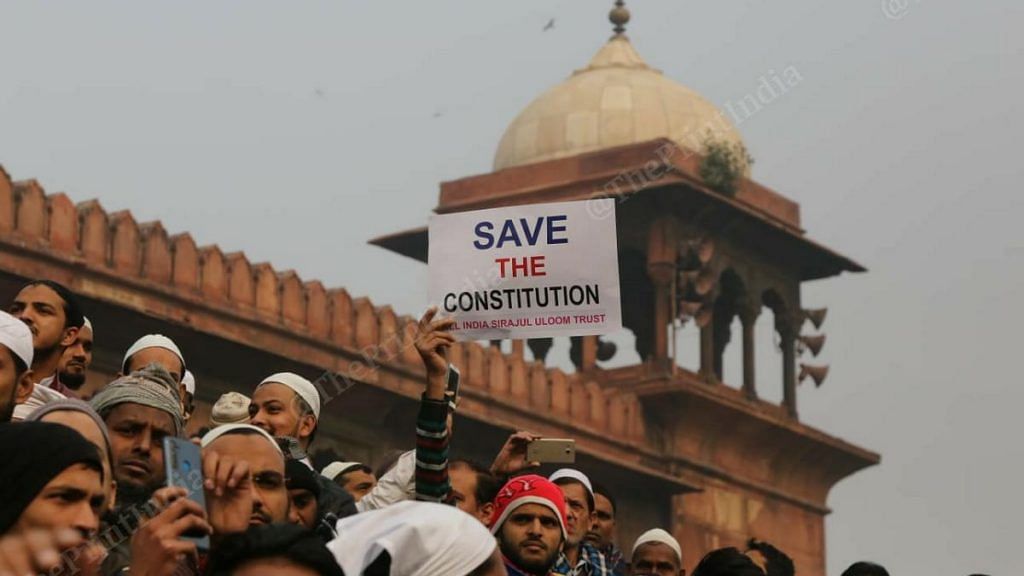New Year resolutions are personal. That is how they should be, normally. But at this stage in our national history, when India is being disfigured beyond recognition, we cannot separate our personal from the political. When the head of the government singles out clothes worn by protesters – Prime Minister Narendra Modi’s dog whistle against people protesting the Citizenship Amendment Act – when the police opens a war on one community, when children are tortured, when ‘spiritual gurus’ become peddlers of plain lies, and when the young have risen on and off the campuses, we cannot have a purely personal resolution. To invert the famous feminist slogan, now political is personal.
We are in the middle of a battle to reclaim the republic. The ongoing protests against CAA-NRC-NPR are not merely a powerful statement against a discriminatory law or a repugnant executive action.
People in Assam continue to be on the streets, cutting across religious lines, to defend their identity, to ensure non-violation of a sacred agreement, and to secure a dignified relationship with the rest of India. The Muslim community has participated in an unprecedented mass movement, cutting across regions, to demand equal citizenship, to express its anguish at de-facto second rate citizenship, and to prevent this from turning into a de-jure disenfranchisement. And the youth of India – cutting across the religious and regional divide – is coming together to assert that the nation’s present and its future cannot be held hostage by those who stoke its divided past. We are witnessing a movement to save the soul of India.
Also read: CAB protests a battle for India – either we are a secular state or we aren’t India at all
Usual govt tricks, unusual people response
Faced with an unexpected and unprecedented response from unusual quarters, the Narendra Modi regime is resorting to tried and tested tricks: spin doctoring to make white lies look half-respectable, sugarcoating to make hatred look harmless, unleashing the propaganda machinery to brainwash citizens, and using media power to play down the nature of protests and to play up the government version. Indira Gandhi used the same tricks during the Emergency.
Besides managing news, the Modi regime is resorting to brutal suppression and repression. Most BJP state governments have effectively banned any peaceful and democratic gathering or protest against the CAA-NRC. As and when the protests are allowed, the law enforcement agencies are actively looking for, if not creating, trouble. Excessive use of force has become the norm in handling these protests. Compare these, for example, with how police force had handled the Jat agitation in Haryana and the Maratha protests in Maharashtra. Uttar Pradesh, led by BJP’s Yogi Adityanath, is under a reign of terror. In many towns, the UP Police has unleashed what cannot be described as anything but a war on the Muslim community.
This moment in the country’s history fuses the challenges to all the founding principles of the idea of India: democracy, diversity, and development. The Indian economy faces a serious, perhaps structural, downturn. As the slowdown threatens to turn into a recession, the unemployment rate continues to rise, and the farm distress continues unabated, the Modi government shows no sign of understanding the crisis, let alone resolve it. Hence the repeated attempts to lead Indians into powerful and emotive distractions: Article 370, Ayodhya, CAA, and now perhaps the Uniform Civil Code or anti-conversion law. These moves have enormous long-term costs for India. But they achieve the short-term objective of shoring up the Modi regime’s popularity. The existence of democratic rights and institutional apparatus is an obstacle in the realisation of this design. Hence the undermining of democratic institutions, conventions and procedures, and the unleashing of brutal state power.
Also read: Youth protests against CAA, NRC has potential to change politics. But 2 key things missing
Unite India movement
It would be idle to predict the outcome of this battle at this stage. This movement could be the saviour for the republic that seemed to be folding up in 2019. The Modi regime, on the other hand, has not given up the hope of using these protests to further divide India along Hindu-Muslim lines. It all depends on how the contest pans out over the next few weeks. But one thing is clear: the rulers are out to divide the country. The people have to take up the responsibility to unite and reunite the country.
Hence, my proposal for a New Year resolution: “woh todenge, hum jodenge (they will divide, we shall unite)”.
The protests against CAA-NRC-NPR must turn into a ‘Bharat-jodo andolan’, an all-India movement for national unity. It is necessary to protest against these divisive designs of the BJP government. But the protests must be supplemented by positive, constructive actions aimed at fostering communal harmony. To counter the propaganda about mob-violence, the protesters must adopt a strict Gandhian code of non-violence. To avoid the possibility of political misuse of these protests, the movement must maintain its non-partisan character. Let the tricolour and the Indian Constitution be the only symbols of this movement to repair the damage done to the unity and integrity of India.
January provides many occasions to reinforce this message of national unity: 3rd of January is celebrated by women’s and Bahujan organisations as Savitribai Phule Jayanti; Vivekananda Jayanti on the 12th is the National Youth Day; 17th of January marks the anniversary of Rohith Vemula’s death; 23rd January is Netaji Subhas Chandra Bose’s birth anniversary; and then there is Republic Day on 26th and Gandhiji’s martyrdom day on the 30th. The movement against the CAA has already seen many creative expressions of national unity. Instead of falling into a routine of mass rallies and marches, which are unsustainable beyond a point, we need newer forms of protests.
The author is the national president of Swaraj India. Views are personal.
